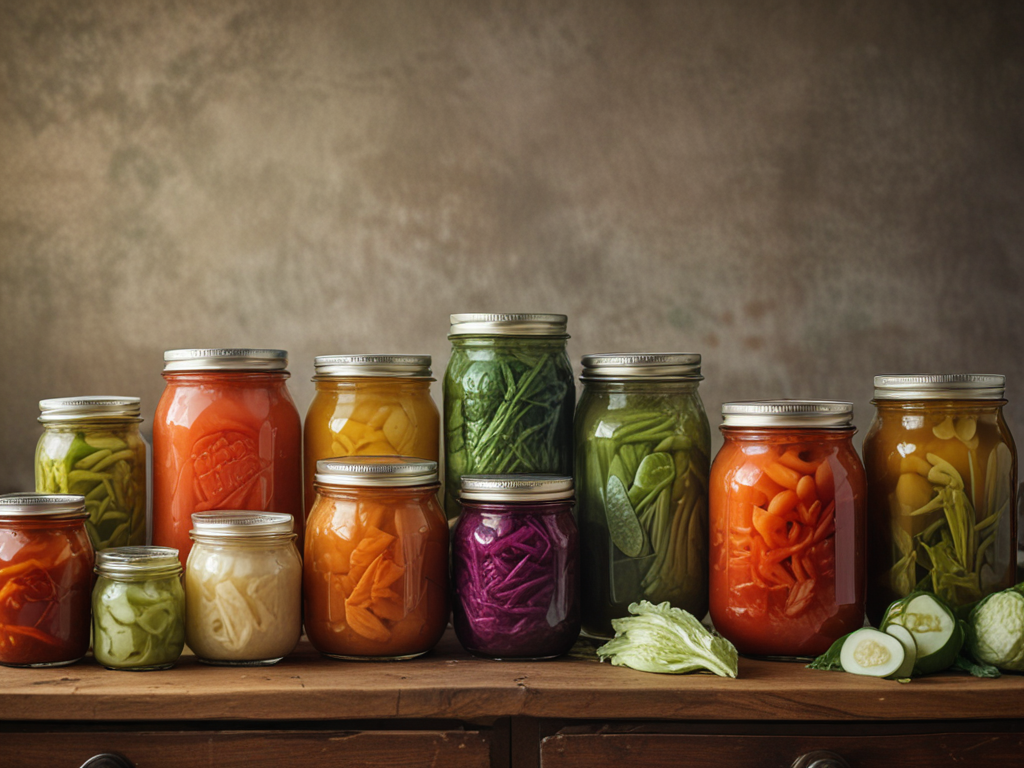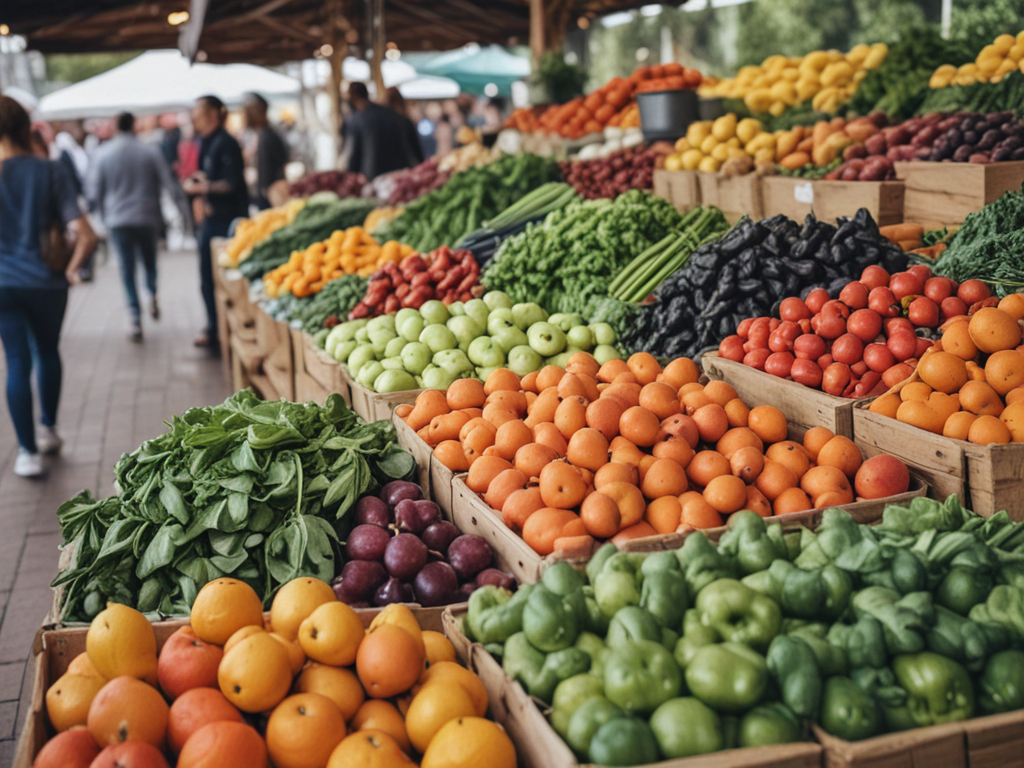
In the world of fermentation, did you know that the process involves transforming sugars and other nutrients into beneficial compounds through the action of microorganisms like bacteria and yeast? While many are familiar with the tangy taste of kombucha and the spicy kick of kimchi, there’s a whole universe of fermented foods waiting to be explored. From the intricate steps of brewing kombucha to the complex flavors of kimchi, understanding the art and science behind home fermentation can lead to a world of culinary possibilities that are not only delicious but also packed with health benefits.
Health Benefits of Fermented Foods
Exploring the health benefits of fermented foods reveals a myriad of advantages that can positively impact one’s well-being. Fermented foods are renowned for their ability to promote gut health and boost immunity. The process of fermentation produces beneficial bacteria known as probiotics, which play an essential role in maintaining a healthy balance of microflora in the gut. These probiotics help enhance digestion, reduce inflammation, and strengthen the immune system, thereby contributing to overall well-being.
Moreover, fermented foods can aid in weight loss and improve digestion. The presence of probiotics in fermented foods promotes a healthy gut environment, which is essential for efficient digestion and nutrient absorption. By supporting a healthy digestive system, fermented foods can help regulate metabolism and promote weight loss. Additionally, the fermentation process can increase the bioavailability of nutrients in foods, making them easier for the body to digest and utilize effectively. Incorporating a variety of fermented foods into one’s diet can hence have a significant positive impact on both gut health and overall wellness.
Essential Equipment for Home Fermentation
When setting up a home fermentation station, certain essential equipment is necessary to guarantee the process runs smoothly and effectively. Here are three vital items that every home fermenter should consider:
-
Fermentation Vessels: Selecting the right fermentation vessels is key to successful fermentation. Whether you choose glass jars, ceramic crocks, or food-grade plastic containers, make sure they are properly sanitized and have airtight lids to create the ideal environment for fermentation.
-
Accessories: Alongside fermentation vessels, having accessories like airlocks, fermentation weights, and pH testing strips can enhance the fermentation process. Airlocks help release gases produced during fermentation, fermentation weights keep food submerged in brine, and pH testing strips assist in monitoring acidity levels.
-
DIY Fermentation Tools: For those looking to get creative with their fermentation projects, DIY fermentation tools can be both cost-effective and fun to use. Items like homemade fermentation weights, jar openers, or even customized labels can add a personal touch to your fermentation setup, making the process more enjoyable and rewarding.
Step-by-Step Guide to Making Kombucha
To craft delicious and probiotic-rich kombucha at home, one must first gather the necessary ingredients and equipment. The key components include black or green tea, sugar, a kombucha culture (also known as SCOBY – Symbiotic Culture Of Bacteria and Yeast), and filtered water. The kombucha culture is a living symbiotic colony that initiates the fermentation process. Ensuring proper care for the SCOBY is essential for successful kombucha brewing.
Once the ingredients are assembled, the process begins with brewing tea, adding sugar to feed the culture, and allowing the mixture to cool. The SCOBY is then introduced into the sweetened tea, and the fermentation process begins. This can take anywhere from 7 to 14 days, depending on desired taste and environmental conditions.
During fermentation, flavor experimentation can take place by adding fruits, herbs, or spices. Understanding fermentation techniques such as temperature control and sanitation is vital for a safe and successful brewing process. With proper care and attention to detail, crafting homemade kombucha can be a rewarding and flavorful experience.
Fermenting Kimchi: A Flavorful Journey
Moving from the domain of kombucha brewing to the domain of fermented vegetables, particularly kimchi, opens up a world of pungent flavors and vibrant culinary exploration. Fermenting kimchi involves a process that marries spicy fermentation with traditional flavors to create a dish that tantalizes the taste buds. Here are three key points to take into account when delving into the flavorful journey of fermenting kimchi:
-
Spicy Fermentation: Kimchi’s signature spice comes from the gochugaru (Korean red pepper flakes) utilized in the fermentation process. The balance of heat and tanginess develops over time as the flavors meld, offering a unique sensory experience.
-
Traditional Flavors: Authentic kimchi recipes often include ingredients like napa cabbage, daikon radish, garlic, ginger, and fish sauce. These ingredients contribute to the umami-rich profile that defines this traditional Korean dish.
-
Culinary Experimentation: While traditional kimchi recipes are cherished, fermentation allows for creative twists. Experimenting with different vegetables, seasonings, and fermentation times can lead to personalized kimchi variations that cater to individual preferences.
Exploring Other Fermented Delicacies
I will examine a variety of fermented foods that offer an array of unique flavor profiles, showcasing the diversity within the world of fermentation. From tangy sauerkraut to pungent miso, each delicacy presents a distinct taste experience shaped by the fermentation process. Exploring these fermented treasures allows for a deeper understanding of the intricate flavors that can be achieved through the art of fermentation.
Diverse Fermented Foods
Exploring the world of fermentation reveals a myriad of diverse delicacies beyond the familiar domains of kombucha and kimchi. When delving into this fascinating domain, one encounters a rich tapestry of flavors and traditions that span the globe. Here are three enthralling examples that showcase the diversity of fermented foods:
- Fermented Beverages: From the effervescent tang of kefir to the complex flavors of kvass, fermented beverages offer a renewing alternative to traditional drinks.
- Pickles: Crisp, tangy, and full of probiotic goodness, pickles come in a multitude of varieties worldwide, each boasting its own unique blend of spices and herbs.
- International Fermentation Traditions: Begin a culinary journey through the ancient fermentation practices of countries like Japan, Korea, and Mexico, where time-honored techniques yield exquisite delicacies.
Unique Flavor Profiles
Venturing further into the domain of fermentation reveals a vast array of unique flavor profiles that characterize a multitude of lesser-known fermented delicacies from around the world. Flavor experimentation in these fermented foods offers a gateway to taste exploration like never before. The intriguing tang of fermented miso, the pungent complexity of stinky tofu, or the umami richness of natto are just a few examples of the diverse tastes awaiting discovery. Each fermented delicacy presents a unique sensory experience, showcasing the cultural diversity and culinary creativity of different regions. Embracing these distinct flavors allows for a deeper understanding of the complex processes that transform ordinary ingredients into extraordinary gastronomic delights. Prepare your palate for a journey of unparalleled taste exploration through the world of lesser-known fermented delicacies.
Troubleshooting Common Fermentation Issues
Identifying and addressing common fermentation issues is essential for maintaining the quality and safety of your homemade products. When troubleshooting fermentation problems, it’s critical to contemplate factors such as pH levels, temperature control, and potential contamination. Here are three key points to keep in mind:
-
Monitor pH Levels: pH levels play a critical role in the fermentation process. Confirm that the pH of your fermenting mixture is within the best range for the specific product you are making. Deviations from the ideal pH can lead to undesirable microbial growth or inhibit the activity of beneficial bacteria.
-
Maintain Proper Temperature: Temperature fluctuations can impact the fermentation process. It’s important to keep your fermenting containers in a stable environment with the appropriate temperature for the specific fermentation culture you are using. Extreme temperatures can slow down or halt fermentation altogether.
-
Watch Out for Mold and Contamination: Mold growth or contamination can ruin your fermentation batch. Keep your equipment clean and sanitized, work in a hygienic environment, and closely observe your fermenting products for any signs of mold or other contamination. If detected, take immediate action to prevent further issues.





